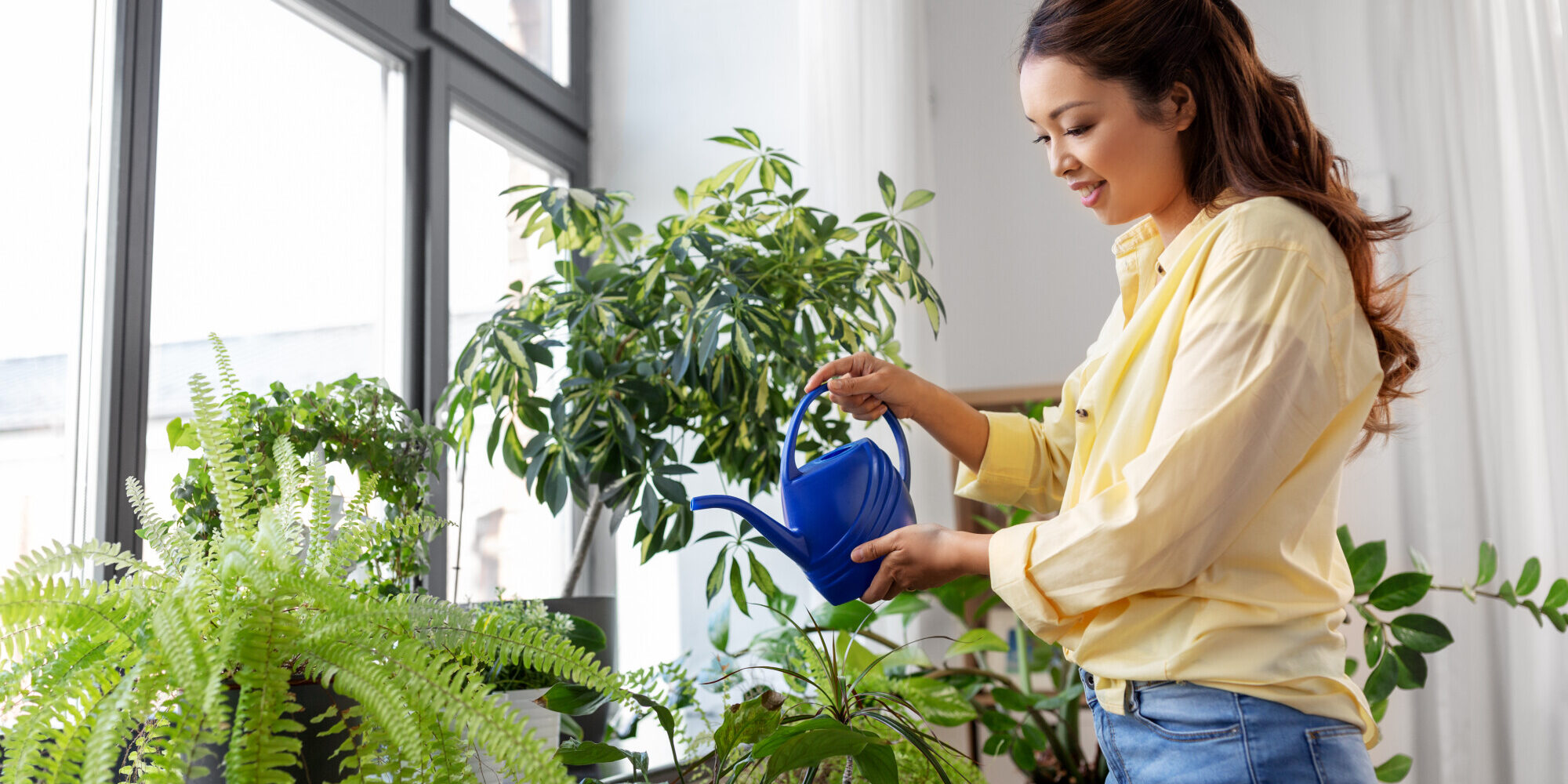6 Indoor Plant Care Mistakes and How to Avoid Them
Whether or not you were a plant enthusiast before the pandemic, the chances are good that you’ve picked up a plant or two since then. Research suggests that indoor plants are having a moment, with demand surging by 18% during the pandemic and over two-thirds of U.S. households having at least one even now. Of course, the fact that you love the look of the new peace lily in your home or office won’t keep it from wilting. Indoor plant care mistakes are easier to make than you might think, and even minor ones can kill off your favorite plants.
Not sure why you seem to have a black thumb instead of a green thumb? Here are a few mistakes you may be making.
1. Choosing the Wrong Plant
We love plants too, so we get it: sometimes, it’s tempting to pick up an attractive plant without doing your research!
However, it’s important to select a plant that fits your level of expertise and the amount of time you can spend maintaining it. Some plants are easier to care for than others, some need highly specific light and temperature conditions, and some are disease-prone.
It’s also important to make sure you’re choosing a plant that can thrive indoors, as putting an outdoor plant near a sunny window isn’t often enough to ensure its growth. If you’re not sure what to expect from a pretty new plant, do your research before picking it up. You can also use our list of indoor plant selections as a guide to plants that can thrive inside your home or office.
2. Not Watering With Care
Watering indoor plants is a tricky prospect. Often, you’ll need to strike a careful balance between too much and too little water at a time.
Underwatering your plants, as you might expect, means that they won’t have the nutrients they need to grow. Signs that a plant is underwatered include drooping or brown leaves. You may also notice that water seems to run through the plant when you do water it, which means the soil is dry enough that the roots aren’t absorbing water well.
Though underwatering can be a major issue, one of the most common plant care mistakes is overwatering. Beginner plant enthusiasts often find themselves tempted to water a plant almost as often as they see it, which isn’t doing the plant any favors!
Overwatering plants can lead to a host of problems, as perpetual moisture in the soil can cause cosmetic conditions like yellow leaves or serious ones like root rot. If you aren’t careful, you can even create an environment that invites mold growth or pests.
Every plant species needs watering at different frequencies, so it’s important to research the type of plant you own in advance.
You’ll want to use your fingers to make sure that the top layer of soil is dry before watering. You can also use special tools like soil measuring meters. Some indoor gardeners also swear by careful note-taking or plant apps, which can allow you to track how a plant reacts to each watering.
3. Using the Wrong Soil
Whether you’re bringing home a new plant or repotting an old one, you might automatically reach for whatever bag of soil you have on hand.
Keep in mind, however, that not all soil is created equal. Indoor gardeners should opt for potting soil over regular garden soil, and you should also buy a soil mix geared to the types of indoor plants you prefer. Succulents, ferns, and orchids, for example, will all react better to a soil mixture with their specific needs in mind.
While we’re on the topic of soil, don’t forget that you shouldn’t leave the soil untreated forever. Periodic fertilizing is crucial for indoor plants, as the amount of nutrients in their soil is limited.
4. Using Planters With No Drainage
No matter how appealing a planter may look, never forget that the most important part of it is at the bottom. If there are no drainage holes, you may be condemning your plant to a slow death.
Drainage holes allow water to run out of the soil, which can help you avoid conditions like root rot. Note that the common suggestion to add rocks or gravel to the bottom of your planter will not help with drainage. The drainage holes are more than enough!
5. Repotting at the Wrong Time
If you want to encourage more plant growth, it’s important to repot your plants. With most species, you won’t need to add this to your indoor plant care routine too often, as the majority of plants need repotting only once every few years.
You can tell it’s time for repotting when a plant has stayed the same size for several months or when you can tell the roots are outgrowing the current pot.
When you’re ready to repot your plant, aim for a container that is one or two inches wider than its current container. Depending on the root system, you may want to choose a deeper pot as well. Don’t forget to tousle the roots and mix new soil into the existing soil!
6. Not Considering the Lighting
Indoor plant lighting can be a tricky subject, as each species prefers and tolerates a different amount of light. While you might be able to grow certain plants by placing them in a sunny window, this tactic won’t work for all plants.
Do your research to figure out the correct amount of lighting for your chosen plant. Some plants prefer low to moderate light. Direct sunlight can even scorch the leaves of some plants!
For a more aesthetic plant with fuller leaves, it can also help to turn the planter every now and then. This ensures more even growth.
It’s also worth remembering that the amount of sun coming in through your windows will change throughout the year. As a result, you may want to change your indoor plant placement between summer and winter.
Avoid These Indoor Plant Care Mistakes
No matter what types of plants are decorating your home, office, or commercial space, it’s crucial to know how to care for them. Avoiding the common indoor plant care mistakes above can help you keep your favorite plants green and growing for years to come.
Of course, if you’re ready to hand off plant care and even plant selection to a team of experts, we’re here to help! With a wealth of indoor plant services to choose from, including monthly plant maintenance, we can ensure that the tips above are taken care of every time. To learn more, get in touch with us.







